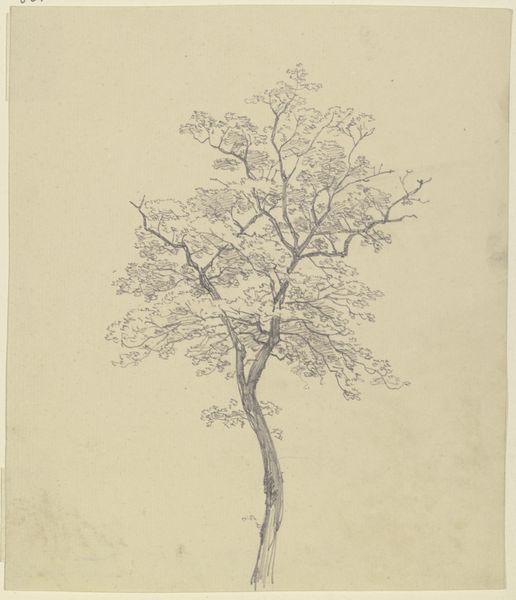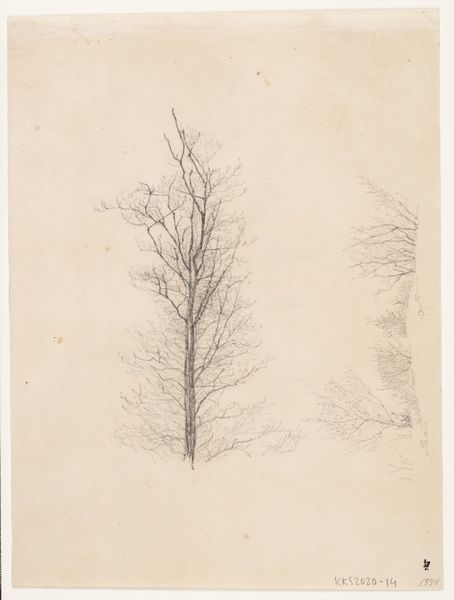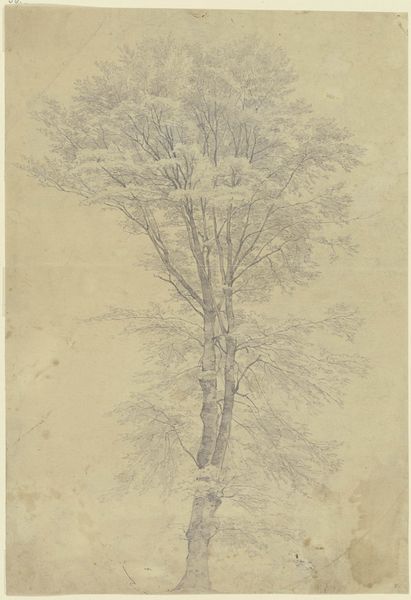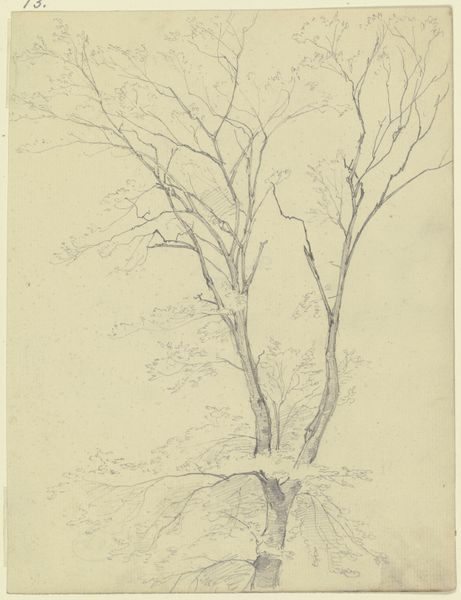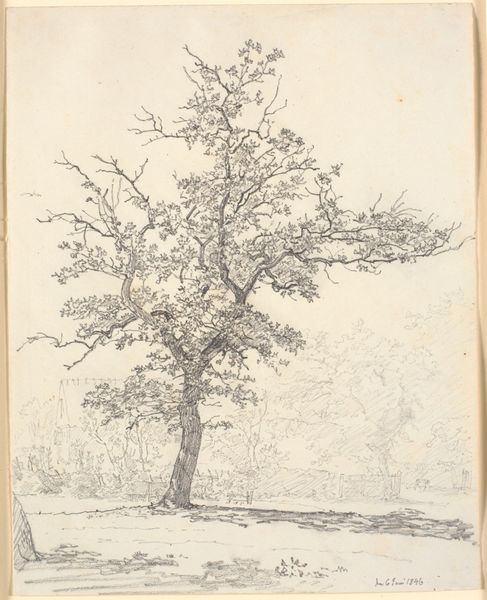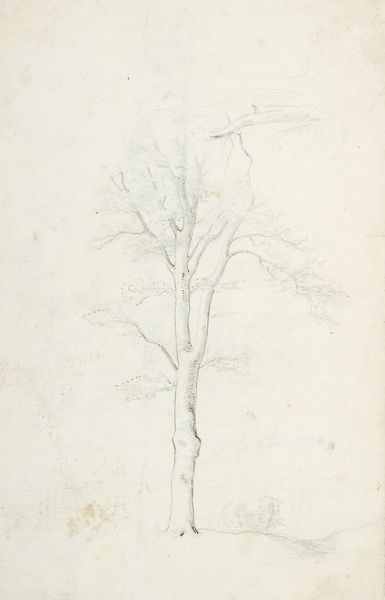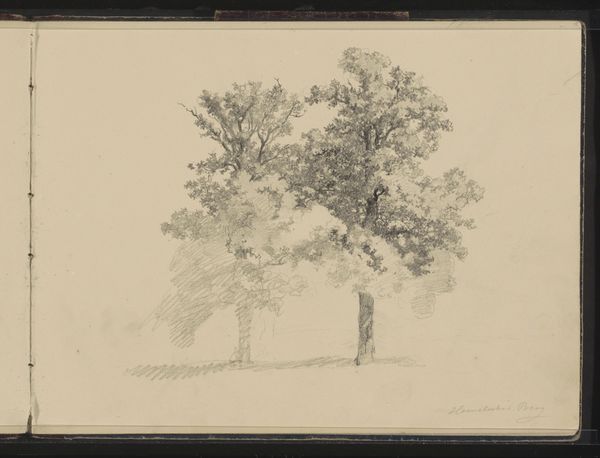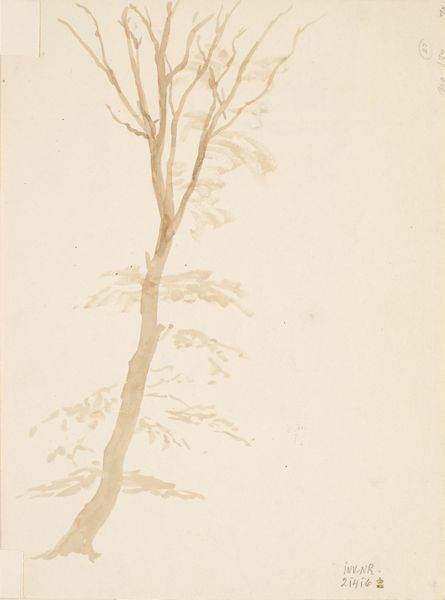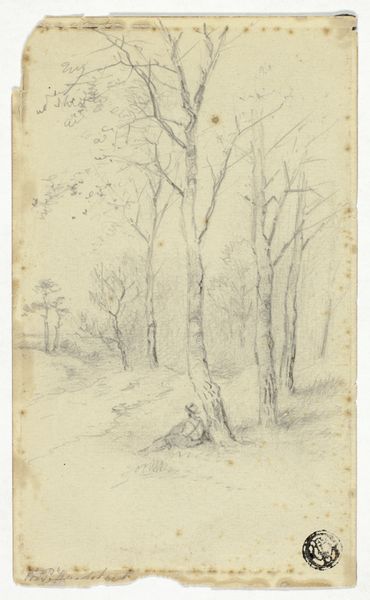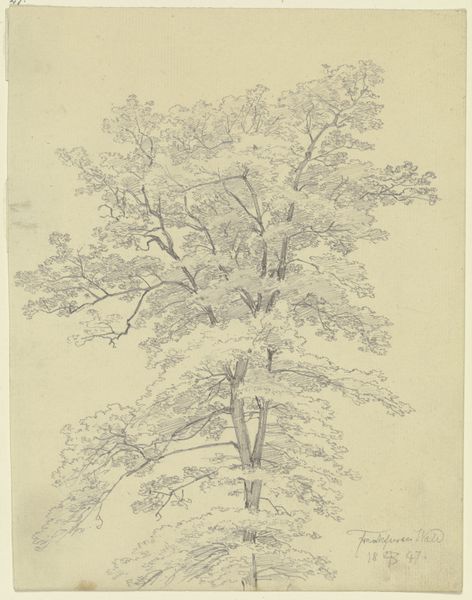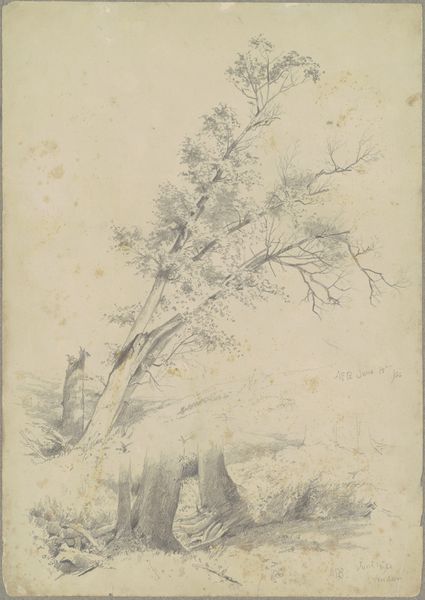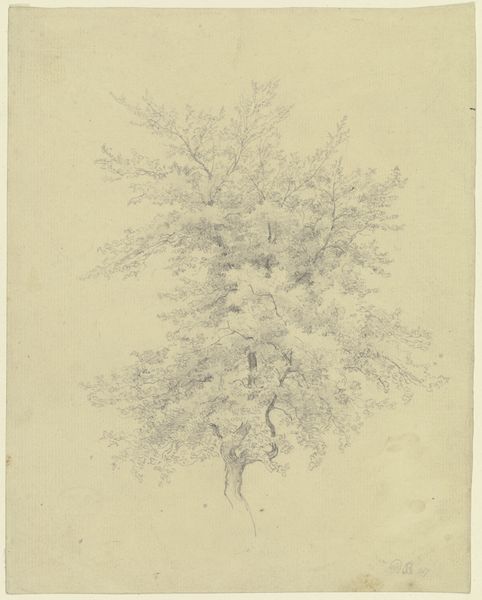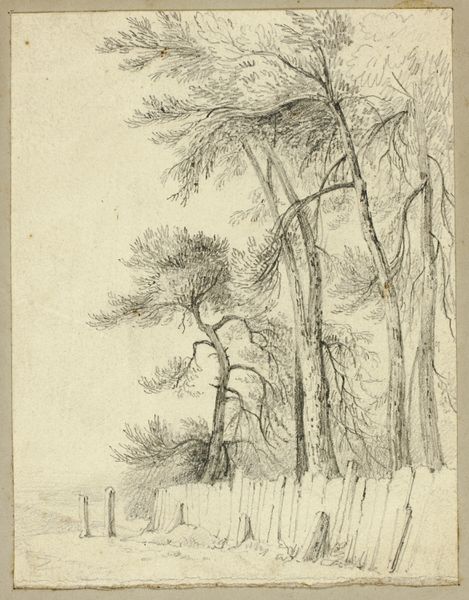
Copyright: Public Domain
Curator: This pencil and ink drawing, rendered by Hans Thoma around 1860, is entitled "Leafless tree with birds." It's currently held at the Städel Museum. Editor: It strikes me immediately as incredibly bleak, almost haunting. The bare tree set against what appears to be a vast, empty landscape...it evokes a sense of isolation, maybe even mourning. Curator: Interesting observation. Looking at this work through a socio-political lens, it was made during a period of great social upheaval and nascent industrialization. Romanticism, while waning, still grappled with the alienation of the individual in a rapidly changing world. This stark image perhaps captures the individual's feeling of displacement. The tree, barren, vulnerable. Editor: And the birds? Are they a symbol of hope, or perhaps just witnesses to the desolation? Considering Thoma's broader work and its roots in realism, are we perhaps meant to simply observe, without assigning any lofty symbolism? Were the bird’s part of Thoma's public response to Ornithophobia within the art community at the time, I wonder? Curator: Realism and Romanticism were indeed complexly entwined then. Thoma aimed to render nature faithfully, yet his sensitivity to mood permeates the drawing. The birds, tiny against the imposing branches, could represent resilience in the face of adversity, a faint spark of life refusing to be extinguished. Considering artistic expressions about avian life at that period, the drawing shows no real fear that others tried to communicate about the fear of birds. I wouldn’t be so fast as to correlate Ornithophobia and "Leafless Tree". Editor: I can see your point. But what if we invert that reading? What if the barren tree symbolizes a ravaged social structure, a society stripped bare by political conflict or industrial exploitation, while the birds represent privileged onlookers, untouched by the suffering below? This way of framing this shows how easily the viewer may shift position within the landscape, maybe feeling empathetic towards the subjects in their lives, or seeing the entire drawing from the detached perspective as Thoma invites the audience to partake in a specific time. Curator: That's a compelling reinterpretation. The politics of imagery are always contingent on the viewer's perspective and historical moment. Editor: Indeed. This small drawing prompts a surprising wealth of complex reflections. Curator: A reminder that art, even seemingly simple sketches, can serve as mirrors reflecting our own anxieties and hopes back at us, even 160 years later.
Comments
No comments
Be the first to comment and join the conversation on the ultimate creative platform.
